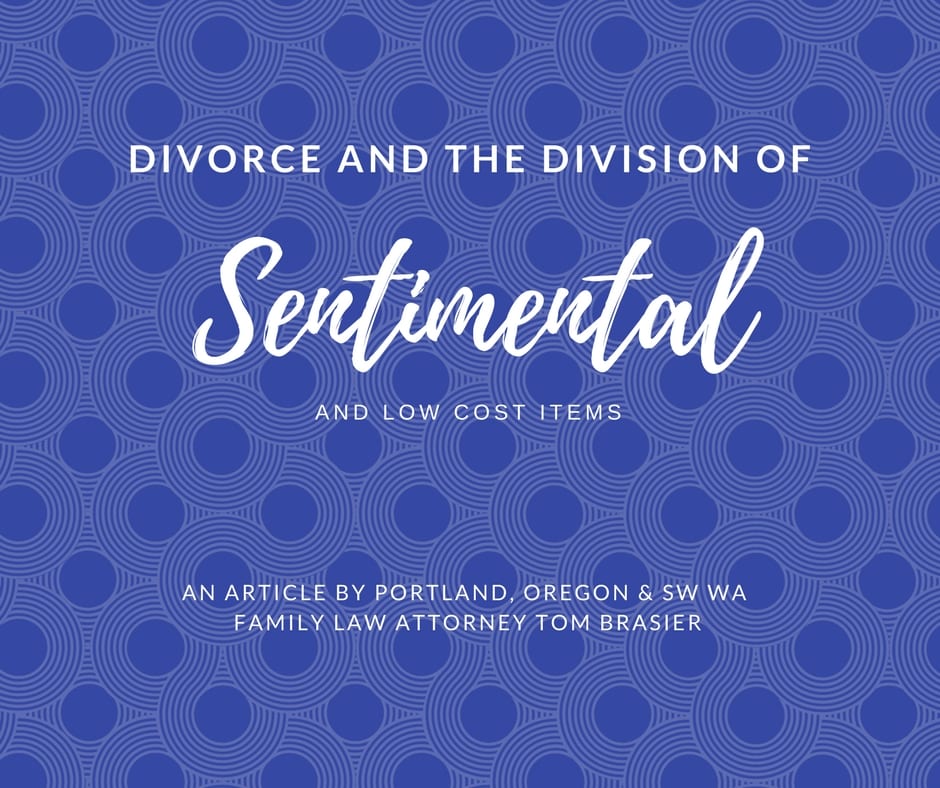Dividing Sentimental Items and “Low Value” Items When Getting Divorced
Surprisingly, oftentimes one of the most difficult parts of a divorce is the division of the smaller things like family photos and personal items. Dividing sentimental items for a divorce can be tricky. It may be easy enough to divide the big-ticket items because those have a clear monetary value that we can assign. People usually aren’t emotionally attached to the washer and dryer, so we can just assign a value to it, and someone can go buy a new one with their monetary award if they need to.
The smaller items are the ones that can be tricky though. One common small item to be divided are family photos. In the last 5-10 years technology has made this more manageable, as you can pay a fee to a company now to copy all of your hard photos onto a disk drive, so both parties can keep them. But that doesn’t solve the problem for all sentimental items.
Dividing sentimental items when both parties want them.
For items of sentimental value that modern technology hasn’t caught up to yet, it can be a real problem when both people want the item. Maybe this is a special antique that both parties like or any one of a thousand items that aren’t easily replaced by assigning a value to them. The same problem is true for smaller items like chairs, or that old Ikea bookshelf that costs $20 and is falling apart. While those don’t have sentimental value, they don’t have a monetary value worth bothering with, so who gets to keep it if both people want it?
Judge’s often deal with this problem by not dealing with it, at least not themselves. They typically take the position that the two parties should be able to agree on dividing these things in a fair way, and if they can’t, they often force the parties to go to binding arbitration. The thought behind this being that if the parties know they have to pay a separate arbitration fee, they will stop fighting over these small items.
As a divorce attorney, I prefer a different method. I prefer to do a draft. I often suggest that my client and the other party each create a list on their own of every item that falls under this “too small to value” category. We then combine the lists into a single list and give both parties a copy of it. We flip a coin to see who goes first, and the parties take turns emailing the other with one item at a time that they are selecting. It can take a while, but that way people can choose their own value (by choosing more important things sooner) of what is most important to them, be it for sentimental reasons or not.
This only applies when parties going through a divorce are stuck here. Almost always, when push comes to shove, the parties are able to agree on a compromise to the small ticket items without having to resort to a method like this.


